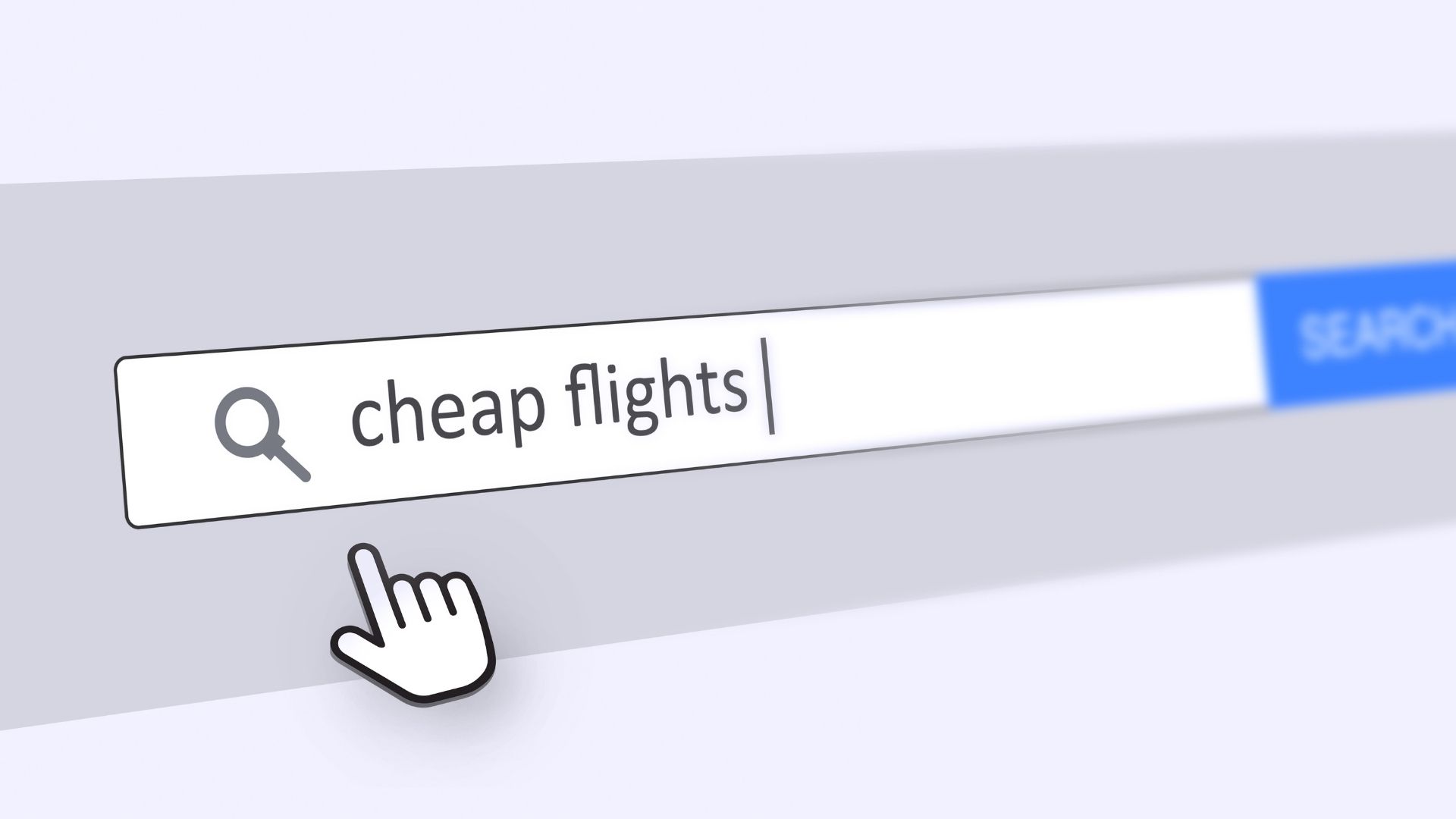The Tuesday Legend: Where It All Began
Before algorithms ruled the skies, airfare pricing followed a pretty human rhythm.
Back in the 1990s and early 2000s, airlines manually released fare updates on Monday nights. Competitors would then scramble on Tuesday mornings to match or undercut prices.
So for a brief, shining moment, Tuesday afternoon became the sweet spot — when discounts were fresh, seats were available, and the computers hadn’t yet caught up.
Travel bloggers noticed. Reporters picked it up. Suddenly, it became gospel: Tuesday = cheap flights.
The logic worked — back then. But in the digital era? That old system is long gone.
Now, airfare pricing happens 24/7, powered by AI, demand forecasting, and billions of data points that change by the hour.
In other words: Tuesdays aren’t special anymore. The robots don’t care what day it is.

So, What Changed?
Several major shifts have quietly buried the “Tuesday rule” — and if you know what replaced it, you can actually use it to your advantage.
Here’s what really happened behind the scenes:
- Dynamic Pricing Took Over
Airlines now use real-time data — search volume, booking trends, even competitor pricing — to adjust fares automatically.
That means a seat that costs $150 at 9 a.m. could cost $210 by lunchtime. - AI Predicts Demand Better Than Ever
Instead of manually dropping prices, airlines predict when you’re likely to book — and adjust accordingly.
If their data shows travelers searching more on weekends or after payday, guess what? Prices rise then. - Personalization Changed the Game
Airlines and booking sites now tailor prices based on your behavior. If you search multiple times for the same route, you’re signaling interest — and that can actually increase your displayed fare.
(Yes, it’s annoying. Yes, there are ways around it. We’ll get to that.) - Low-Cost Carriers Broke the Pattern
Budget airlines like Ryanair, Wizz Air, and Spirit changed the competitive landscape. Their fares fluctuate more based on capacity and route popularity than day-of-week traditions.
Simply put: the old rhythm of “Tuesday drops, Wednesday stabilizes, weekend surges” has been replaced by constant micro-adjustments.
Prices now shift dozens — even hundreds — of times per day.
The New Reality: It’s About When You Fly, Not When You Book
Here’s the ironic twist: while booking on a Tuesday doesn’t guarantee savings, flying on a Tuesday often still does.
Why? Because fewer people want to.
Business travelers usually depart Mondays and return Thursdays. Leisure travelers favor Fridays and Sundays. That leaves Tuesday and Wednesday flights — the midweek “dead zone” — where planes are emptier and fares drop naturally.
So while the booking-day myth has faded, the travel-day advantage still holds true.
In other words:
It’s not about when you click “book.”
It’s about when you take off.
What Actually Works Now
If you really want to pay less, the game isn’t about superstition — it’s about strategy.
Here’s what modern travelers are doing instead of chasing outdated Tuesday myths:
1. Track Routes, Not Dates
Instead of obsessing over specific days, track your favorite routes over time.
Airlines and aggregators use predictive pricing tools that analyze fare history for your destination — helping you spot true dips versus fake “sales.”
If you know a flight averages $500 but suddenly drops to $350, that’s your window — no matter what day it is.
The trick? Monitor routes, not calendars.
2. Book 6 to 8 Weeks Out for Domestic, 3 to 6 Months for International
The timing sweet spot still exists — it just depends on distance.
- Domestic flights: 6–8 weeks in advance is ideal. Too early, and airlines haven’t released promo fares; too late, and demand spikes.
- International flights: 3–6 months out tends to hit the lowest fares before seasonal price climbs begin.
Last-minute deals still happen, but they’re riskier — especially post-2020, when flight availability became tighter across the board.
3. Avoid the Human Rush Hours
Airlines don’t have “days of the week” anymore — but they do have behavioral patterns.
Their algorithms respond to when humans are most active.
Prices often rise during:
- Evenings (when most people are online)
- Weekends (when people have time to search)
- Holidays or paydays
That means the real “cheap window” isn’t Tuesday — it’s early morning, midweek, when fewer people are looking.
Try checking fares on Wednesday or Thursday mornings between 5 a.m. and 8 a.m. local time. You might be shocked by the difference.
4. Clear Your Cache (or Use Incognito Mode)
Every time you search the same flight repeatedly, your cookies tell booking engines: “This person really wants this trip.”
The result? Dynamic pricing can quietly nudge fares upward — a psychological trick to make you panic-book.
Avoid this by searching in incognito/private mode or on a different device.
Better yet, use a VPN to simulate browsing from another country — sometimes saving you hundreds based on regional pricing variations.
5. Embrace “Ghost Seats” and Drop Alerts
Ever seen a cheap flight vanish, then reappear two days later? That’s a ghost seat — a fare temporarily held by someone who didn’t complete their booking.
Many airlines automatically re-release these within 24–48 hours.
Set price alerts for your preferred route and be ready to pounce. Often, the best deals happen in these tiny windows between cancellations and re-releases — not on any particular weekday.
6. Look for Late-Night Drops
Here’s a fun insider secret: some airlines still batch-update fares late at night (usually between 11 p.m. and 2 a.m.) in their local time zone.
That’s when you can sometimes catch sudden dips, especially for low-cost carriers resetting seat availability.
It’s not as predictable as it used to be — but if you’re up late, it’s worth a peek.
7. Avoid the “Prime Time” Myth
A lot of guides still say “book early morning Tuesday” or “book Friday midnight.” The truth? There’s no magic clock anymore — but there is a crowd effect.
When thousands of people are all searching at once (thanks to viral TikToks about “best time to book”), algorithms detect high demand — and raise prices accordingly.
So if you want to outsmart the masses, book off-hours: early mornings, mid-afternoons, or odd times in your target destination’s timezone.
Airlines reward the quiet searchers.
So, When Is the Cheapest Day to Book Now?
After analyzing flight data from multiple sources and travel experts, here’s the consensus in plain English:
There’s no universal cheapest day.
But…
Midweek mornings (Tuesday–Thursday) tend to have slightly lower fares than weekends or evenings — simply because fewer people are online.
That means if you must pick a window, try Wednesday morning, about 6–8 weeks before your trip.
But remember: what matters more is how flexible you are, not what day you book.
If you can shift your trip dates by even one day, or choose a red-eye flight, you’ll usually beat any supposed “booking day rule.”
Bonus: What the Airlines Don’t Tell You
Here’s a truth the industry doesn’t shout from the rooftops: airfare pricing is psychological warfare.
They want you to believe there’s a secret timing trick — because that keeps you checking (and clicking) more often.
But behind the curtain, it’s all about behavioral data. Airlines know:
- Most travelers search multiple times before buying.
- People are more likely to book when they see rising prices.
- Fear of missing out (FOMO) triggers urgency.
That’s why fares fluctuate wildly. You’re not crazy — they really are changing just because you looked twice.
The Smart Traveler’s Mindset
Instead of obsessing over mythical booking days, the best travelers think like strategists:
- Stay flexible: Be open to shifting your departure by a day or two.
- Compare currencies: Sometimes booking in another currency (if available) yields lower base fares.
- Mix airlines: One-way tickets on different carriers can be cheaper than a round-trip.
- Avoid emotion: Never book in panic after seeing a “fare increase.” Wait 24 hours — it often drops again.
The goal isn’t to outsmart the algorithm every time. It’s to stop playing by its rules.
The Bottom Line
The “Tuesday trick” belongs to a simpler era — one before data-driven pricing and digital surveillance turned airfare into a living, breathing marketplace.
It’s comforting to think there’s one perfect day to book your dream trip. But the real secret is more empowering: you control the price more than you think.
When you know how to time your searches, use privacy tools, and fly midweek, you’re already beating the system.
So stop waiting for Tuesday.
The cheapest flight might just be waiting for you — right now.

Final Thought: Travel Smarter, Not Harder
The myth of the “Tuesday flight deal” stuck around because it offered something travelers love — control.
But control doesn’t come from superstitions anymore. It comes from understanding the new rules of the game.
Once you stop chasing old legends and start watching real patterns, every flight feels like a win.
And when that happens?
You’re not just finding cheaper flights — you’re mastering modern travel.
- Why Tuesdays Aren’t the Cheapest Day to Fly Anymore (and What Actually Is) - October 14, 2025
- The Hidden Perks at Airports You Already Paid For — But Don’t Know Exist - October 14, 2025
- The Real Reason Prices Jump When You Search Twice — and How to Stop It - October 14, 2025




